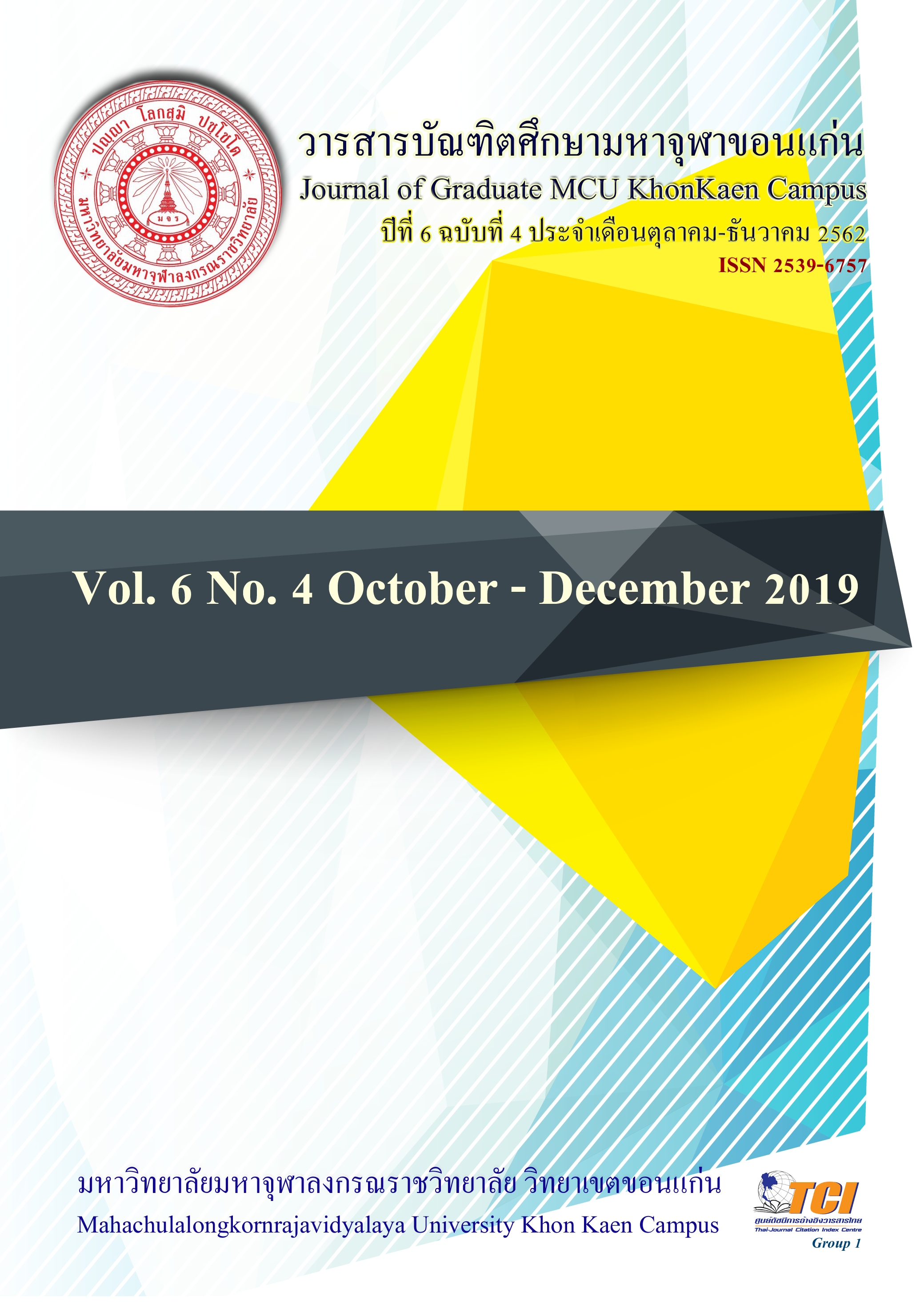The Strategies for Enhancing Leadership Skills in the 21st Century of SchoolAdministrators under the Office of Secondary Educational Area in Northeast Part
Main Article Content
Abstract
The objectives of this research were to study current situation and desirable conditions and to develop strategies for enhancing leadership skills in the 21st century of educational institutions administrators under the Office of Secondary Educational Area in the Northeast part. The sample groups totaled 380 persons including15educational institutions administrators and365 teachers.The sample size was determined by R.V.Krejcie& D.W. Morgan by using stratified random sampling method. The research instruments were a 5-level rating scale component evaluation and questionnaire withIndex of Item–Objective Congruence (IOC) between 0.80-1.00and reliability at0.90. The statistics used for data analysis included percentage, mean, standard deviation and reliability.
The research results were found that:
- The components of enhancing leadership skills in the 21st century of school administrators under the Office of Secondary Educational Area in the Northeast consisted of 6 components including 1) Academic leadership skill, 2) Team building skill, 3) Digital and technology skill, 4) Decision-making and problem solving skill, 5) Human relationship skill and 6) Creative thinking skill.
- The current situations of enhancing leadership skills in the 21st century of school administrators under the Office of Secondary Educational Area in the Northeast, in all, were rated at a moderate level. The desirable conditions of enhancing leadership skills in the 21st century of school administrators under the Office of Secondary Educational Area in the Northeast were rated at the highest level.
- The strategies for enhancing leadership skills in the 21st century of school administrators under the Office of Secondary Educational Area in the Northeast included 5 strategies as follows: The 1st strategy: Developing skills in using digital and technology systems consisted of 7 measures and 7 indicators. The 2nd strategy: Promoting team-working consisted of 6 measures and 6 indicators. The 3rd strategy: Developing personnel creatively consisted of measures and 7 indicators. The 4th strategy: Developing academic leadership consisted of 7 measures and 7 indicators. The 5th strategy: Developing the courage of decision making consisted of 6 measures and 6 indicators.
Article Details
References
Development to the ASEAN community. A New Direction in the 21st Century.
Ejimofor, Francis O. (2007). Principals' Transformational Leadership Skills and Their Teachers' Job Satisfaction in
Nigeria. ETD Archive.
Girvan, N. (2001). Reinterpreting the Caribbean. In B. Meeks & F. Lindahl (Eds.), New Caribbean thought: A reader.
Jamaica : University of the West Indies Press.
Nair. (2007). Schools for the 21st century : Are you ready. Searched on 21.
National Association of Secondary School Principals (NASSP). (2013). Breaking Ranks: 10 Skills for Successful
School Leaders. Online. Retrieved February 3, 2019. from: https://www.nassp.org/Content/
158/BR_tenskills ExSum.pdf
Office of the Education Council. (2009). Summary of the 9-year Performance of Educational Reform (1999-2008).
Bangkok: VTC Communication.
Policy of the Office of the Basic Education Commission. (2019). National youth development into the 21st century
world. Online. Retrieved February 6, 2019. https://www.obec.go.th/archives/12738.
Sukanya Chaemchoy. (2012). Innovative Concepts for Educational Management in the 21st Century. Journal of
Education Naresuan University, 14(2), 117-128.
Sumet Ngamkanok. (2008). Strengthening Values according to the Concept of Sufficient Economy for Elementary
School Students. Chonburi : Burapha University.
Wichian Rooyuenyong, et al. (2016). Good Governance-Based Administration of Schools under the Secondary
Educational Service Area Office 25. Journal of Education,KhonKaen University, 39(2), 43-53.

